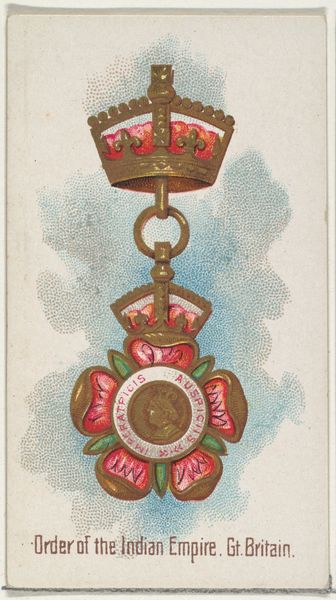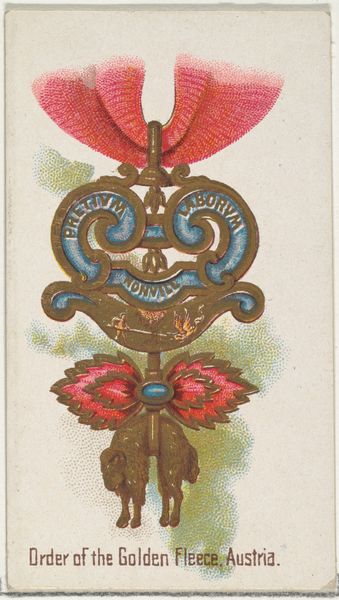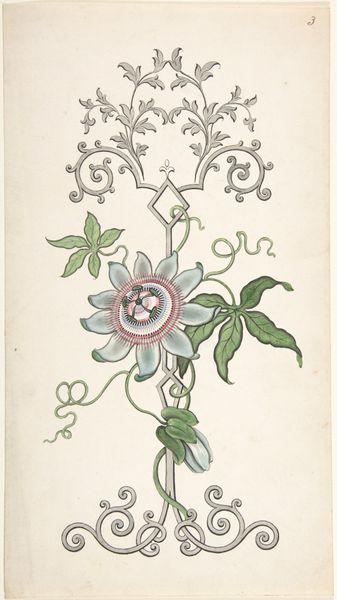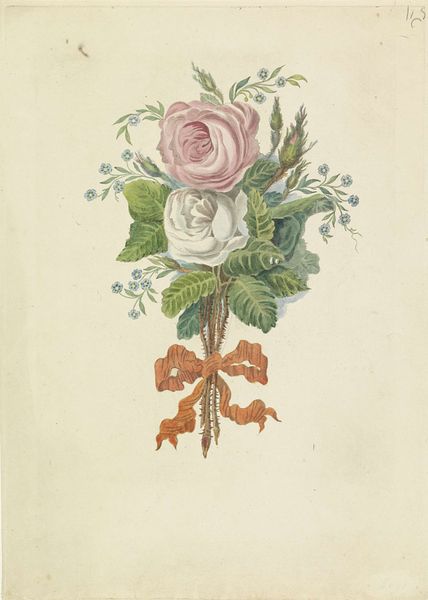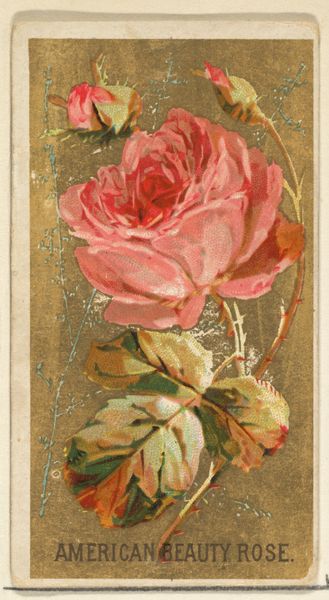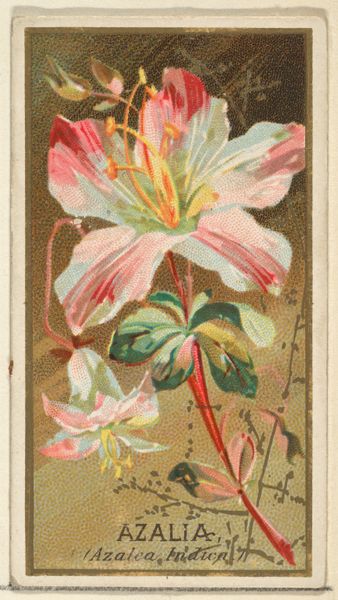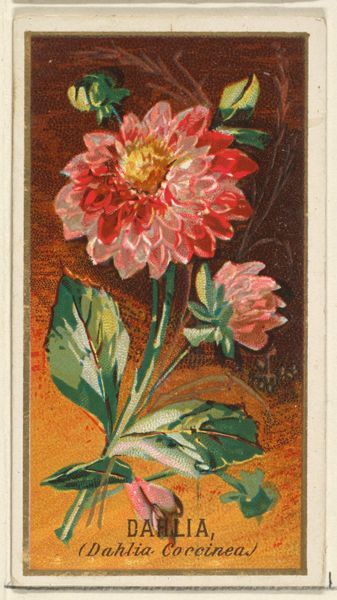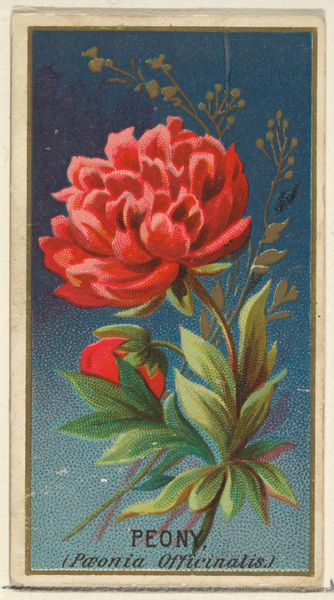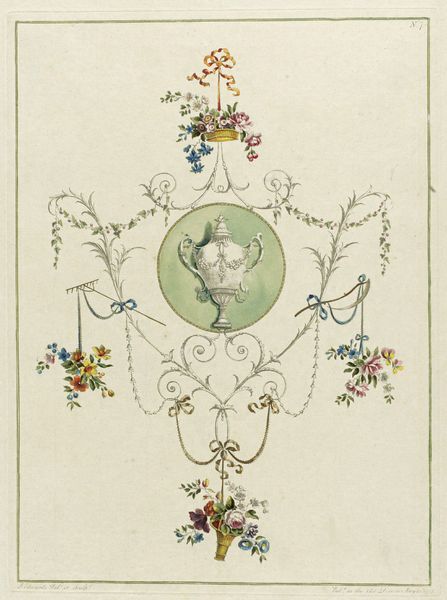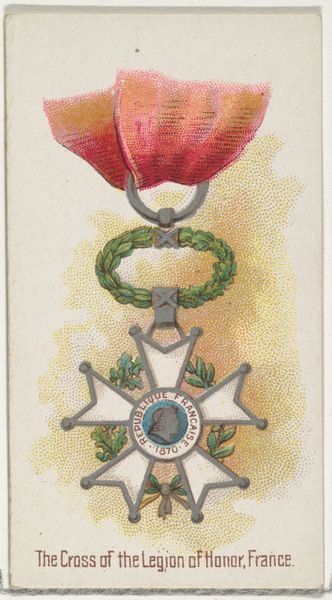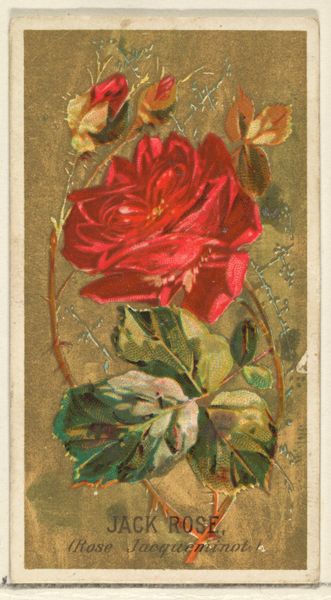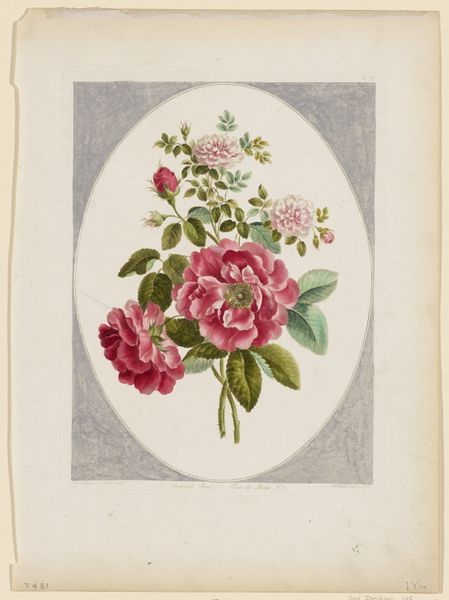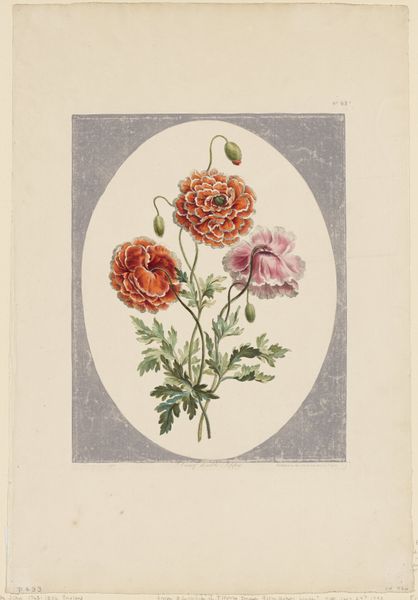
The Imperial Order of the Rose of Brazil, from the World's Decorations series (N30) for Allen & Ginter Cigarettes 1890
0:00
0:00
drawing, print
#
medal
#
drawing
#
toned paper
#
childish illustration
#
water colours
#
egg art
# print
#
curved letter used
#
coloured pencil
#
watercolour bleed
#
watercolour illustration
#
botanical art
#
watercolor
Dimensions: Sheet: 2 3/4 x 1 1/2 in. (7 x 3.8 cm)
Copyright: Public Domain
Curator: Looking at "The Imperial Order of the Rose of Brazil," a print from 1890 by Allen & Ginter, it strikes me as a fascinating object—both artwork and artifact. Editor: Yes, a captivating little thing. My initial impression is one of delicate manufacture, like a piece of handmade lace or an elaborate confection. Almost ephemeral. Curator: Absolutely. The Order itself carries powerful symbolic weight. Roses, historically, signify love, beauty, and sometimes secrecy. Paired with imperial connotations, what meanings are conveyed here? What traditions of imagery and power does it tap? Editor: And that weight is juxtaposed with its origin as a cigarette card—an object mass-produced and distributed as commercial ephemera. I’m drawn to the contrast between the precious subject matter and the quotidian, disposable nature of its creation. The physical print itself would have been rendered using fairly cheap techniques on paper, produced en masse. Curator: Exactly. Its creation served to elevate the Allen & Ginter brand, imbuing it with aristocratic, romantic associations through a specific kind of iconography. These cards would have circulated widely, implanting specific meanings in the minds of ordinary people. It speaks volumes about societal aspiration and image manipulation. Editor: How the act of reproducing this imagery serves to democratize luxury. For a fleeting moment, the consumer experiences the aura of the Imperial Order. The lithographic process and the paper medium facilitated this dispersal, connecting tobacco consumption with a romantic vision of Brazilian aristocracy. A triumph of accessible artistry, if I may be so bold. Curator: It makes us think about cultural memory too. These symbols accumulate layers of meaning over time. What did the rose mean then, compared to now? Editor: A point well-made; what the relationship between commodity, artwork, labour, and social power was at that specific time. Something easy to take for granted. Curator: Examining its history, artistry, and consumption, we uncover so much about the values and desires of that era. It makes the artwork resonate more fully today. Editor: Precisely; what initially seemed like a delicate, simple rendering holds surprising depths and provocative questions concerning art, industry, and society.
Comments
No comments
Be the first to comment and join the conversation on the ultimate creative platform.
